Super Nutrition for Babies excerpt: Super Nutrition for Moms!
The authors of Super Nutrition for Babies are graciously allowing me to share an excerpt from their book with you. Even if you don’t have a baby at home I think that this chapter has important information for you. I choose this section on nutrition for nursing moms because it contains information on optimal nutrition for all people. Pregnancy and nursing put a huge tax on your body and nutritional stores and if you aren’t eating optimally you can end your nursing relationship with nutrient deficiencies that set you up for health issues and compromise the nutrition available to any subsequent babies as well. I know that plenty of my readers are following the GAPS diet because of the nutrient deficiencies you already have. While this program is designed especially for the nutrition that nursing mom’s need it is a great listing of nutrient dense foods that can help restore health in anyone who is suffering from diseases related to nutritional deficiencies.
Also at the bottom you will have an opportunities to have your questions answered.
Super Nutrition for Babies (excerpt)
Super Nutrition for Nursing Moms
As a nursing mom, you want your diet to contain as much nutrition as it can along with the least amount of toxins possible. (While this is sound advice for everyone, it is of particular importance when you’ve got the job of nourishing yourself and your baby!)
The Weston A. Price Foundation (WAPF) is a national nonprofit nutrition organization and traditional-foods advocacy group. Founded in 1999, their experts have extensively studied the work of several researchers, who surmised from traditional, preindustrialized people that optimal health is entirely possible with the right form of foods and nutrient density. Based upon an extensive review of this research, WAPF has compiled and recommends a diet for pregnant and nursing mothers, as follows (reprinted with permission).
- Cod Liver Oil to supply* [no more than] 20,000 IU vitamin A and 2,000 IU vitamin D per day
- 1 quart (or 32 ounces [950 ml]) whole milk daily*, preferably raw and from pasture-fed cows (Learn more about raw milk on page 28.)
- 4 tablespoons (55 g) butter* daily, preferably from pasture-fed cows
- 2 or more eggs daily, preferably from pastured chickens
- Additional egg yolks daily, added to smoothies, salad dressings, scrambled eggs, etc.
- 3 to 4 ounces (85 to 115 g) fresh liver, once or twice per week
- Fresh seafood*, 2 to 4 times per week, particularly wild salmon, shellfish, and fish eggs
- Fresh beef or lamb daily, always consumed with the fat
- Oily fish* or lard daily, for vitamin D
- 2 tablespoons (28 g) coconut oil daily, used in cooking or smoothies, etc.
- Lacto-fermented condiments and beverages (see page 64)
- Bone broths used in soups, stews, and sauces Soaked [or sprouted] whole grains [and soaked or sprouted nuts and seeds] (page 136)
- Fresh vegetables and fruits
These recommendations are scientifically geared to nourish a nursing mother with all the minerals, enzymes, immune factors, vitamins, antioxidants, and fat-soluble activators she needs for herself and her baby. Many items should be consumed daily, but some should be a weekly goal. Below, we offer clarification on some of the guidelines, noted with (*) in the chart, as well as important information to best adapt them to your diet.
Vitamin A and cod liver oil. Taking cod liver oil (CLO) as a nursing mom provides benefits to both you and your baby. It is an excellent source of vitamins A and D, as well as the anti-inflammatory essential fatty acids DHA and EPA. The nutrients in CLO are in their most natural and “body-ready” form, making this single supplement extremely powerful in terms of health benefits. As for vitamin A, you’ll get it predominantly from liver or cod liver oil, as well as some from eggs and butter. Though it is very, very important to get enough vitamin A, you don’t want to exceed 20,000 IU per day. As a rule of thumb, if you eat liver, you don’t necessarily need to take cod liver oil that day.
All that milk! Thirty-two ounces (950 ml) of milk is equal to four big glasses. If the milk you’re drinking is fresh, raw, and grass fed, your hardworking, nursing body will likely love it. If you don’t have access to a clean, raw dairy, hold off on drinking that much, as pasteurized milk is often irritating and inflammatory. To minimize inflammation and maximize nutrition, choose milk that is organic, preferably grass fed, nonhomogenized, and vat pasteurized (lower heat); see WAPF shopping guide in Resources (page 215), for brands. Or instead, combine some high-quality whole-milk plain yogurt (8 to 16 ounces, or 225 to 455 g) and cheese (about 4 ounces, or 115 g) daily, and make sure you get Souper Stock (page 56) several times per week, if not daily, as well.
If you suspect your baby is irritated by the pasteurized dairy you are consuming, we urge you to procure a source of trusted raw dairy. (Refer to “Got Raw?” on page 28.) But if raw dairy is truly inaccessible, we suggest Souper Stock with each meal, daily, to attempt to provide the absorbable minerals that would’ve been found in dairy in your diet. Additionally, probiotics and cod liver oil are a must in the absence of high-quality dairy. Usually, butter is tolerable (and desirable!), even if pasteurized milk is not; but if not, we recommend ghee.
Does it have to be whole milk? Yes, whole milk is a whole food. Stripping away the fat does far more than just reduce the calories. Important nutrients, including vitamins A and D, in milk are housed in the fat. These vitamins need to be consumed with fat to be used by the body, and without them, you can’t use the minerals in the foods you eat either. Whole (or unchanged) milk provides fat, fat-soluble vitamins, and minerals—all of which work together. (Remember, nursing burns calories, and fat is satisfying, so don’t worry that you’ll “overindulge”!)
Butter—Better than you thought! Butter from grass-fed cows is an amazing healing food. Grass-fed, raw butter contains fat-soluble vitamin A (retinol), fat-soluble beta-carotene, conjugated linoleic acid (a potent cancer-fighting fat found almost exclusively in grass-fed dairy and animal fat), omega-3s (which are crucial to building your baby’s brain, like DHA), and fat-soluble vitamin E. Several fatty acids in butter support the immune, digestive, and nervous system. High-quality butter is a Super POWER food because it provides such excellent nutrients, along with the fat to make sure your body can use them! No longer should you view butter as a stick of fat, but as a great source of nourishment, which just so happens to also make foods taste great! Additionally, though we unnecessarily fear saturated fat, the nutrients in grass-fed, organic butter (particularly raw), have so many benefits, it is undeniably a heart- and health-helpful food.
Seafood safety. We recommend wild-caught seafood, but in instances where you can be assured no antibiotics, vaccines, or GMO feed are used, then high-quality farm-raised is acceptable. To reduce heavy metal and pollutant risk, we strongly recommend that at least half of the two to four weekly fish servings come from small, oily fish (such as sardines or anchovies) or fish roe (caviar), which are the least contaminated.
ANIMAL AND SEA FOODS
We urge you to consume plenty of animal foods, as well as some sea foods. The source of the animal foods you eat, though, and what they ate, is very important. Pastured, grass-fed animal foods are the very best. Next best is organic. Less nutritious is “all natural.” Finally, you’ve got conventional, or “normal”, animal foods at your regular grocery store.
THE RIGHT FATS
Your milk is made of high quantities of saturated fat and cholesterol, which are essential to your baby’s development, most importantly her brain development. Your milk is naturally made of close to 60 percent fat and cholesterol, almost identical to the fat content of babies’ brains—also made of about 60 percent fat. If you don’t provide your body with enough fat and cholesterol in your diet, your body will be taxed with making them for your milk. (If you never eat saturated fat, your body will make this important nutrient from carbohydrates. But why tax enzymes and nutrients to do this? Just supply some in your diet.)
Proper proportion of fats. Most of your fats should come from butter, eggs, cheese, and meat. Coconut fats (oil and milk) should contribute significantly to your fat intake, due to their special medium-chain triglycerides (fats that help feed probiotics, spur metabolism, and lend themselves to healthy thyroid function). Fish, oily fish, and nuts will round out essential fatty acid needs.
Heating and proper usage. Heat, light, time, pressure, and chemicals damage fats, but some are more vulnerable to rancidity than others. Rancid fats are dangerous, contribute to oxidative stress, use nutrient and antioxidant stores, and are a significant source of disease-causing free radicals. Polyunsaturated fats are most vulnerable, whereas saturated fats are the least susceptible. All oils should be cold-pressed and unrefined, if possible. Below describes various kinds of fats and their best cooking applications (despite what their label might say) and heat tolerances.
Saturated fats: coconut oil, butter, ghee, red palm oil, or palm kernel oil; use for sautéing at high heat. Such fats are solid at room temperature and are molecularly stable enough to withstand damage from high heat. Best baking fats include butter, ghee (butter oil), and lard.
Combination saturated/monounsaturated fats: Fats that are saturated, monounsaturated, and polyunsaturated, such as suet and beef tallow, lard, or schmaltz are best used at medium-high heat.
Predominantly monounsaturated fats: olive oil, avocado oil, hazelnut oil, macadamia nut oil, high-oleic safflower oil, and almond oil; can handle moderate heat, so use in medium- to low-heat cooking.
Combination monounsaturated and polyunsaturated fats: peanut oil and pumpkin seed oil; these can be used in medium-low-heat cooking, like light sautéing. Sesame oil is both mono- and polyunsaturated fat but has antioxidant factors (sesamin) that make it better able to handle moderate heat than other combination monoand polyunsaturates.
Polyunsaturated fats: walnut oil, flaxseed oil, perilla seed oil, and borage oil; these are great for cold applications of oils, like salad dressings, and need protection (from heat, light, and time). They should be kept in dark bottles, stored in the refrigerator. Polyunsaturates should make up the lowest portion of your fat intake.
WISE CARBS
As for carbohydrates, eat a variety of greens, vegetables, fruits, nuts, and seeds. We call these “wise” carbs because they pack much more nutrition and fiber—and don’t spike your blood sugar as much—as the more commonly consumed carbs, such as refined grains, beans, and tubers. Grains and beans need special preparation to make them most nutritious because without such preparation, they block nutrients and are hard on the digestive tract. (Refer to chapter 6 for a discussion on preparing grains and legumes properly.)
In addition to sharing this excerpt the authors have offered to answer questions that my readers want to ask here in the comments. These questions can be about any aspect of baby nutrition. So go ahead and ask!
Many of my blog posts contain affiliate links. Purchasing through an affiliate link allows me to keep blogging and sharing what I learn with you. It is a bit like leaving a tip for service and is very much appreciated. Thank You! -PattyLA










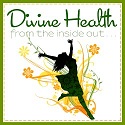
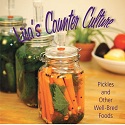
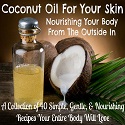
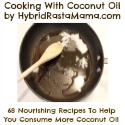
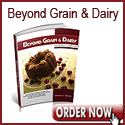
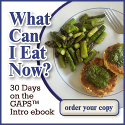
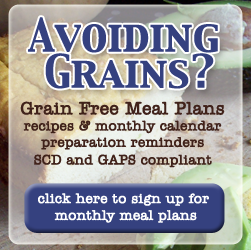
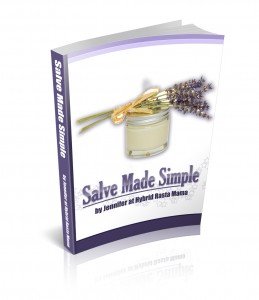
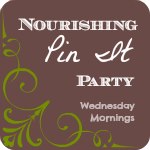

We lacto ferment our own veggies in a pickl-it. At what age is it good to introduce these or the juice from these to my baby? Will they be helpful for her gut? She’s 4 months and breast fed only.
Oh also I read someone that rubbed cod liver oil on their baby’s bottom. Is that a good idea or when should babies start to take it by mouth?
Lela,
I don’t recommend cod liver oil for the skin. It is too smelly and too oily. Coconut oil not only smells nicer but works well on the skin. When coconut oil is cool, it is a solid and so it is easy to apply. It melts almost immediately and absorbs into the skin. For breast feeding mom, I recommend that they take the cod liver oil and thus their babies won’t need to.
Hi Lela,
As Dr. Erlich said, CLO can be smelly and oily, however it is rich in Vitamin A (a great “skin nourisher” and vitamin D - and is a natural source of each - which can be healing for the skin. Actually, it is a more natural form of “A and D Ointment” without mineral oil, and in a more natural source. So, if there is healing/protection you’d particularly like to leverage from the cod liver oil, there is nothing wrong with using it. Though, I’d caution that it should be kept in the fridge as opposed to on the side of the diaper-changing table
And, with regard to the fermented food juices, I think that while they are rich in nutrients (antioxidants, K2), enzymes, and probiotics - which are all instrumental to a healthy diet in older babies/children/adults, that your baby doesn’t need more than your milk at 4 months of age. As you start to introduce meats, a tiny bit of the fermented juices along with meats would be complementary, but that would be at 6-9 months of age.
Kelly
Three questions for you:
1- I know folic acid is important during pregnancy… what about during infancy? Does it cross over in breastmilk, and is it still important?
2- Suggestions for nursing babies with thrush? I have a nursing nephew, and the poor mommy has tried to up her probiotic intake, assuming it’s a yeasty-problem from her. She’s also trying to limit her sugar intake.
3- When ready to introduce foods other than breastmilk, what are the best first foods to start with?
Thanks!
Amy,
Q#1 – Folic acid is very important both during pregnancy and throughout life. It is found in breast milk. One interesting thing that I have found is that over 75% of people have a genetic mutation making folic acid metabolism sluggish. In these people, taking 5-MTHF (an activated form of folic acid) is very helpful and since the majority of people have this mutation, I recommend all pregnant and nursing mothers take this form of folic acid in addition to their prenatal vitamin.
Q#2 – Your sister or sister-in-law is correct – Significantly limiting a nursing mom’s sugar intake is critical to getting rid of yeast, as is increasing probiotic intake (both with mom and baby.) Remember that even fruit contains sugar that feeds yeast. Zinc deficiency can contribute to yeast development as well, so that’s something else to look into.
Q#3 – 6 months is the ideal time to start baby food. In our book, we explain why it is best to wait that long and what the best first foods are. I hope this helps!
My DS is 10 months, at what age should I start to give him CLO directly, and how much? Also, I’m in a veggie rut with him, I feel like I always go to green beans, avocado, and carrots. Any good “finger food” veggies at his age? Thanks!
Hi Kate,
I think particularly if your son is in a veggie rut, the cod liver oil can be a great addition to his nourishment. Please follow the directives in the book about dosing, making sure he is sitting up and not upset/crying. The critical fat-soluble, mineral-activating vitamins A and D, along with critical Omega-3s (such as DHA) are animal-based, so the veggies you provide will not offer them. And, you might think of adding grass-fed (raw if you can get it) butter and/or bone marrow with the veggies in order to get the critical animal fats and nutrients along with the veggies he is enjoying. Sweet potato fries/crackers, zucchini fries, and chunks of squash/strings of spaghetti squash would be good additions.
Kelly
Looking forward to hearing your thoughts on the above questions, I have a son who just turned one and we’ve been battling eczema though it’s much better than it was. I’ve been drinking a lot of water kefir, and pureeing the water kefir grains into his food, thoughts on that?
An herbs that you particularly like for a nursing mother and/or baby, particularly one with eczema? Thanks!
Alison,
One of the greatest things that has helped eczema in my practice has been cod liver oil. If he is still breast fed, you could take 1tsp/day and see how he does. Usually, you will see results within one month. If that is not enough, you could then give him 1/2 tsp per day. The biggest thing to be careful with is that your child doesn’t choke on the cod liver oil, as aspiration of any oil is dangerous. So either give it directly by spoon or mix it in some food like a spoonful of applesauce. Never squirt it in with a syringe as that could cause him to choke. Probiotics are also quite helpful with eczema, especially if he has been on antibiotics during his life or if you or he has had yeast infections or if you had antibiotics during pregnancy or delivery.
One question that I get often is ideas for snacks that babies can feed themselves away from home. Something that isn’t messy and is easily portable. Cereals and puffs are what most mom’s turn to for this problem but those are not healthy choices. What are some healthy choices?
Hi Patty,
Depends on the age of the baby/child. I suggest real fruit or certain veggies, though if small chunks are still not safe and present a choking risk, you can use the netted real-food chewer/feeder which helps eliminate choking risk but allows for real foods to be chewed, gummed, and consumed.
Fruits and veggies can be sticky and somewhat messy - particularly when thinking banana and avocado. As I suggested above, zucchini “fries” or sweet potato “fries” are good options - and babies don’t mind if they are not hot out of the oven, so they can be contained for travel. Sweet potato “crackers” are a good option, as well, as are beverages, in the form of making smoothies that can be kept cold and are not too messy but can have healthy yogurt, fruit, and even veggies incorporated.
When my 3 children were in strollers and young, I often had to clean their trays before and after trips out and about because they would have apple and banana and avocado leftovers. There are number of great tips and ideas in the book as well, which you can look up for the specific age/stage your child is in